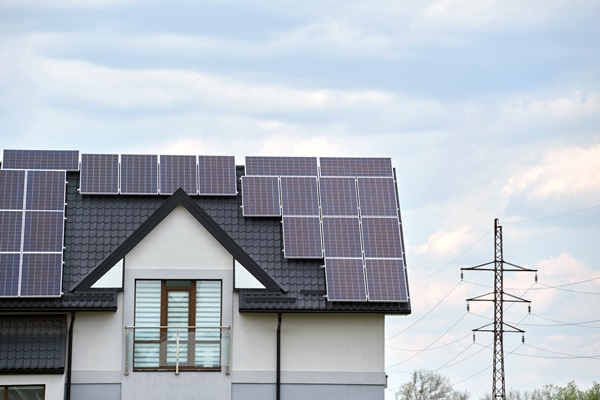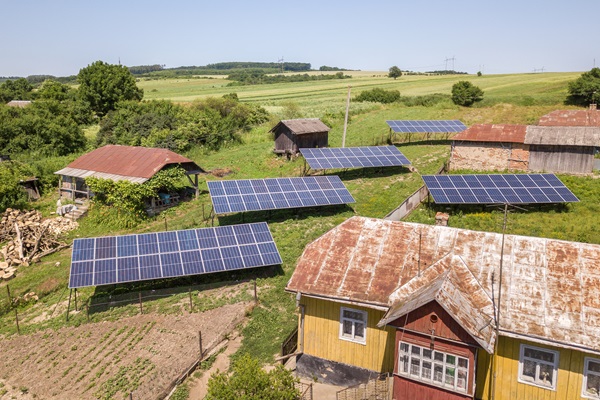Solar energy, a beacon of sustainable power, has emerged as a pivotal player in the global energy landscape. Harnessing the sun’s abundant energy, it offers a promising alternative to fossil fuels. This article aims to delve into the multifaceted nature of solar energy, exploring its myriad benefits and inherent drawbacks. By dissecting its environmental impact, cost-effectiveness, reliability, and influence on the power grid, the goal is to present a balanced perspective. This exploration is crucial for anyone interested in the future of energy, be it consumers, investors, or policymakers.
Contents
The Environmental Impact of Solar Energy

Solar energy stands as a champion of environmental sustainability. Its operation produces zero greenhouse gas emissions, making it a clean alternative to fossil fuels. By reducing reliance on coal and natural gas, solar power significantly lowers the carbon footprint of energy production. Furthermore, its sustainable nature ensures a consistent, pollution-free energy source for generations to come. Solar energy’s contribution to combating climate change is undeniable, positioning it as a key component in global environmental strategies.
Despite its green credentials, solar energy is not without environmental concerns. The production of solar panels often involves the use of hazardous materials, raising questions about manufacturing practices. Additionally, the disposal of aged solar panels poses challenges, potentially leading to waste management issues. Large-scale solar farms require significant land, which can disrupt local ecosystems and wildlife habitats. The environmental trade-offs of solar energy highlight the need for responsible and sustainable practices in its deployment.
Cost-Effectiveness of Solar Energy

The financial aspect of solar energy is a tale of two scenarios. Initially, the installation of solar panels entails a substantial investment, often perceived as a barrier by potential users. However, this upfront cost is mitigated over time through significant reductions in electricity bills. Additionally, many governments offer incentives and subsidies for solar energy adoption, further enhancing its cost-effectiveness. Over the long term, solar power proves to be an economically viable solution, offering savings and financial predictability.
Beyond the apparent expenses, solar energy harbors hidden costs. Maintenance of solar systems, although generally low, can add up over time. The efficiency of solar panels gradually diminishes, necessitating potential upgrades or replacements. In regions with less sunlight, solar energy systems may require supplemental power sources, incurring additional costs. These factors contribute to the total cost of ownership, necessitating a comprehensive financial evaluation before adoption.
Reliability and Efficiency

Solar energy’s efficacy is intrinsically linked to weather conditions and geographic location. In areas with abundant sunlight, solar panels operate at peak efficiency, harnessing maximum energy. However, in regions with frequent cloud cover or higher latitudes, energy yield can significantly fluctuate. This variability introduces challenges in planning and reliance, especially for regions where consistent energy supply is critical. Adapting solar energy solutions to diverse climatic conditions remains a pivotal aspect of its widespread adoption.
The evolving landscape of solar technology paints a hopeful picture of its future. Recent advancements have led to more efficient solar panels capable of converting a higher percentage of sunlight into electricity. Innovations in photovoltaic materials and designs are continually pushing the boundaries of solar panel efficiency. Moreover, developments in energy storage technologies are addressing the intermittent nature of solar power, ensuring a more reliable energy supply. These technological strides are pivotal in enhancing solar energy’s role in the global energy matrix.
Impact on the Power Grid

Solar energy is reshaping the dynamics of power grids worldwide. By decentralizing energy production, it reduces reliance on traditional power grids and diminishes the need for fossil fuels. Households and businesses generating their own solar power contribute to a more resilient and independent energy system. This shift towards localized energy production empowers communities, enhances security, and promotes a more sustainable energy future.
Integrating solar energy into existing power grids is not without its challenges. The intermittent nature of solar power can lead to fluctuations in energy supply, posing stability concerns for the grid. Managing these fluctuations requires sophisticated grid technologies and energy storage solutions. Additionally, the scalability of solar energy poses logistical challenges, necessitating significant infrastructure adaptations. Addressing these issues is crucial for the seamless incorporation of solar energy into the broader energy ecosystem.
Employment and Economic Opportunities

The solar energy sector stands as a beacon of job creation in the modern economy. As the industry expands, it demands a diverse range of skills, from manufacturing to installation and maintenance of solar systems. This surge in employment opportunities is not confined to any single region; it’s a global phenomenon, providing jobs in both developed and developing countries. The growth of solar energy directly translates into more jobs, contributing significantly to employment markets. The sector’s robust expansion is anticipated to continue, reflecting the growing global commitment to renewable energy.
The economic implications of solar energy extend beyond job creation. It stimulates investment from both public and private sectors, driving growth and innovation. Local economies benefit from the installation and operation of solar facilities, which often leads to the development of ancillary industries. Internationally, solar energy is a hotbed for investment, attracting stakeholders looking to capitalize on the shift towards renewable resources. This influx of investment bolsters the energy sector and contributes to the broader economic stability and growth.
Consumer Accessibility and Adoption

Solar energy has become increasingly accessible to a broader consumer base over recent years. Advancements in technology and manufacturing have led to a significant reduction in the cost of solar panels, making them more affordable for average consumers. Governments and organizations worldwide are also implementing policies and programs to promote solar energy adoption, including subsidies, tax incentives, and financing options. This trend towards greater accessibility is pivotal in transitioning to a more sustainable energy future, enabling more households and businesses to tap into the benefits of solar power.
Despite increasing accessibility, several barriers to solar energy adoption still persist. The initial cost, despite decreasing, remains prohibitive for some individuals and small businesses. Additionally, the complexity of installing and integrating solar systems can be daunting, requiring technical expertise and, often, significant property modifications. There are also logistical challenges, particularly in urban areas with limited space or in regions with less favorable weather conditions. Overcoming these barriers is essential for broader adoption and requires ongoing efforts in education, policy, and technological innovation.
Solar Energy in Developing Countries

In developing countries, solar energy presents a vital solution for rural electrification. Many remote areas lack access to traditional power grids, leaving populations reliant on expensive and polluting energy sources like diesel generators. Solar power offers an affordable, clean, and sustainable alternative. The deployment of solar systems in these regions can significantly improve the quality of life, providing access to electricity for basic needs, education, and healthcare. The potential of solar energy to bridge the energy divide in developing countries is immense, offering a path to energy independence and socio-economic development.
While the potential is significant, implementing solar energy solutions in developing countries faces unique challenges. The lack of infrastructure, limited financial resources, and insufficient technical expertise can hinder solar energy projects. Furthermore, political and regulatory environments in some regions may not be conducive to renewable energy investments. Addressing these challenges requires coordinated efforts from governments, international organizations, and private entities. Developing tailored solutions that consider local conditions and leveraging partnerships for technology transfer and capacity building are vital to realizing the potential of solar energy in these regions.
Embrace the Solar Revolution
As you’ve explored the multifaceted aspects of solar energy, it’s clear that its benefits extend far beyond just environmental preservation. While challenges exist, the potential for economic growth, job creation, and global energy transformation is immense. The world as a whole must continue to innovate, invest, and educate to overcome barriers and realize solar energy’s full potential. This journey towards a sustainable future requires collective action – let’s embrace the solar revolution, making conscious choices to support and advocate for this vital energy source.


